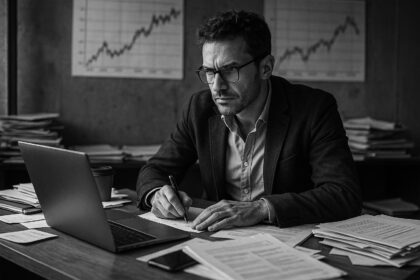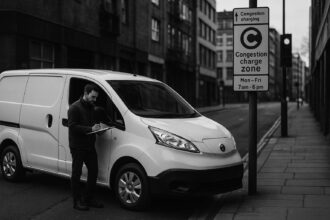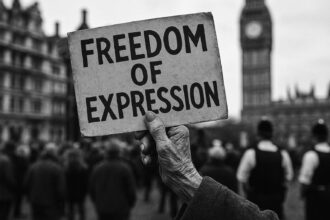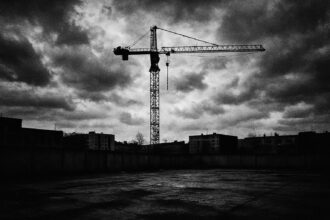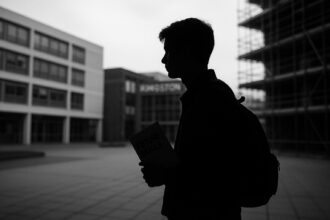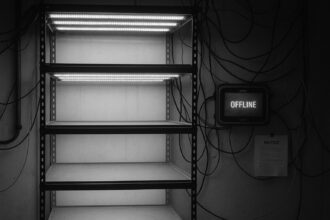As Cuba faces escalating blackouts and fuel shortages, families like Marylín Álvarez’s are turning to ingenuity and resilience to navigate the country’s collapsing energy infrastructure, highlighting a brewing crisis with no clear end in sight.
For Marylín Álvarez and her family, daily life in Havana has devolved into a persistent struggle against an unprecedented energy crisis that has crippled Cuba. Since December, Cuba’s government has ceased supplying cooking gas, forcing families like Álvarez’s to rely on creative and resourceful alternatives to navigate relentless blackouts and fuel shortages. With electricity cuts often lasting for hours, the family frequently resorts to their charcoal stove for meals, a makeshift solution born out of necessity.
Álvarez, a 50-year-old cosmetologist, lives with her husband, Ángel Rodríguez, and their two teenage daughters in the Bahía neighbourhood. “The blackouts are quite severe, and with gas in short supply, I have to be running around to get food on time,” she explains. Rodríguez, an auto mechanic, has managed to create an improvised television using an old laptop screen and an electric motorcycle battery so the family can watch their favourite telenovelas during outages. “It doesn’t last very long, but it’s good enough for my family to watch TV or have some entertainment,” he noted, highlighting the profound impact of creativity on their survival in these challenging times.
This crisis has deep roots in Cuba’s deteriorating energy infrastructure, exacerbated by persistent fuel shortages and rising electricity demands. President Miguel Díaz-Canel has openly identified the power outages as a significant challenge for his administration. Recently, the country has experienced four total blackouts in just over eight months, leaving many Cubans to contend with a stark reality. While electricity demand surged from 2,580 megawatts in March to 3,050 in May, availability barely improved, increasing marginally from 1,790 megawatts to around 1,900 during the same period.
In response, the government has proposed solutions, such as installing solar parks and repairing aging generators with assistance from China and Russia. However, tangible progress remains elusive, leaving many to question the efficacy of these plans. In the meantime, Cubans continue to improvise. In the outskirts of Havana, 45-year-old blacksmith Edinector Vázquez is thriving as demand for affordable charcoal stoves rises. He provides these stoves for around $18 each, a sum equivalent to a state worker’s monthly salary, often offering discounts for low-income families.
Another local resident, Natividad Hernández, attempted to lift her family’s burden by installing solar panels; however, financial constraints limited her ability to purchase necessary batteries and infrastructure, restricting her solar energy use to daytime. Presently, Cuba’s online marketplaces are flooded with advertisements for rechargeable fans and lamps—imports from the United States and Panama—which remain unaffordable for many.
The broader context of Cuba’s energy crisis is even more alarming. Economists like Jorge Piñón from the University of Texas at Austin’s Energy Institute estimate that resolving the situation will take between three to five years and require upwards of $8 billion. Compounding this is a recent spike in gasoline prices, which rose fivefold overnight as the government scrambles to rescue the economy—a move that many citizens view with skepticism given its inflationary potential. On the streets, residents express their frustrations, alluding to the dramatic disconnect between government assurances and their lived reality.
Public dissatisfaction has led to intermittent protests across the island, particularly in Santiago, where citizens have rallied against prolonged blackouts and food shortages. Reports indicate that some demonstrations were met with police presence, though government statements attributed outcry to external anti-government influences. President Díaz-Canel has sought to frame these protests within a broader narrative, urging dialogue while asserting that sanctions and misinformation exacerbated the crisis.
Facing such turmoil, Cubans like Álvarez’s family press on with ingenuity and resilience. “We do our best,” she said, underscoring the spirit of solidarity that prevails despite enduring hardships. As Rodríguez optimistically connects the makeshift television, flickering images appear, offering a brief respite from the relentless challenges that characterise life under the weight of Cuba’s energy crisis. Yet, as he reflects on their situation, he admits, “The time will come when we will run out of ideas.”
 Reference Map:
Reference Map:
- Paragraph 1 – [1], [2]
- Paragraph 2 – [1], [2], [5]
- Paragraph 3 – [3], [4]
- Paragraph 4 – [2], [6]
- Paragraph 5 – [5], [7]
Source: Noah Wire Services
- https://www.independent.co.uk/news/alvarez-cuban-havana-miguel-diazcanel-bahia-b2763252.html – Please view link – unable to able to access data
- https://apnews.com/article/d913e312aa74562d6bbaabbed393ea8d – Cuba is facing its most severe energy crisis in decades, with frequent and prolonged blackouts affecting daily life across the island. Families like that of Marylín Álvarez in Havana are resorting to creative and resourceful strategies to cope. With government-supplied cooking gas halted since December and electric solutions compromised by power outages, the Álvarez family now relies on a charcoal stove for cooking. Her husband, Ángel Rodríguez, created an improvised television using a laptop screen and motorcycle battery so they can continue watching soap operas during blackouts. The energy crisis has worsened recently due to persistent fuel shortages, aging power infrastructure, and rising electricity demands with minimal increases in supply. Cuba has experienced four nationwide blackouts in the past eight months and struggles to meet electrical demand, which rose from 2,580 to 3,050 megawatts between March and May 2025. President Miguel Díaz-Canel acknowledged the problem, with government plans to build solar parks and repair power plants with help from China and Russia, though tangible progress is slow. Entrepreneurs like blacksmith Edinector Vázquez are meeting community needs by producing affordable charcoal stoves. Meanwhile, wealthier citizens install partial solar systems. However, many rely on imported goods, which remain out of reach for most Cubans. Experts estimate $8 billion and years of work are needed to resolve the crisis.
- https://apnews.com/article/ee4b60277107ab3ce781b6e912198304 – On Sunday, small groups of protesters in Santiago, Cuba, rallied against prolonged power outages of up to eight hours and widespread food shortages. The U.S. Embassy in Havana reported similar protests in other provinces. President Miguel Díaz-Canel acknowledged the protests, attributing them to external anti-government influences. The protests arise amidst one of Cuba’s most severe economic and energy crises, exacerbating public dissatisfaction due to inflation and shortage of essential supplies. Social media platforms like X and Facebook played a crucial role in disseminating the situation, although the internet was reportedly shut off in some areas post-demonstrations. The U.S. Embassy urged the Cuban government to respect the protesters’ human rights and address their needs. Local Communist Party officials engaged with protesters in Santiago, where police presence was noted but without reports of violence or arrests.
- https://www.reuters.com/world/americas/amid-blackouts-scarce-food-cuba-protests-rattle-cradle-revolution-2024-03-27/ – Cuba is experiencing widespread protests due to severe food shortages and frequent power outages, particularly in Santiago, the city known as the “cradle” of the Cuban Revolution. The scarcity of basic supplies and electricity blackouts lasting up to 10 hours daily have resulted in high tensions and unrest among residents. On March 17, hundreds protested in Carretera del Morro Park, demanding “power and food,” with some even chanting “freedom.” In response, the Cuban government has distributed more subsidized rations and increased electricity supply. President Miguel Diaz-Canel blames the United States and media for inciting protests while calling for dialogue with citizens. The situation highlights Cuba’s ongoing economic struggles, exacerbated by long-standing US sanctions and an inefficient state-run economy. Despite frustrations, some residents remain supportive of the government’s efforts, while rights groups and past heavy-handed responses to protests deter broader participation.
- https://www.reuters.com/world/americas/cubans-resigned-rising-costs-gas-price-soars-overnight-2024-03-01/ – Cubans are grappling with a steep overnight increase in fuel prices, which have surged fivefold as part of government measures to rescue the country’s collapsed economy. Previously among the world’s cheapest, a liter of “Special” gasoline jumped from 30 pesos (less than 10 cents) to 156 pesos ($20 for a 40-liter tank at the black market exchange rate), exceeding the average monthly salary of 4,856 pesos ($15.66) in 2023. The price hike is part of broader efforts to address long-standing fuel shortages and blackouts. Planned increases in other services, like public transport and electricity, have also been announced to tackle the fiscal deficit. While many Cubans, like civil engineer Luis Collado, understand the necessity, they emphasize the need for corresponding salary increases to mitigate the impact. Critics argue these measures are inflationary and poorly timed.
- https://apnews.com/article/edba9c9929aa875935ab3843a6a6398c – Cuba’s government protested comments from the U.S. Embassy following demonstrations against power blackouts and food shortages by hundreds of people in Santiago, eastern Cuba. The Foreign Ministry lodged a complaint with the U.S. diplomatic mission in Havana, denouncing the comments as interventionist. Protests erupted due to power outages and food shortages, with state media and the U.S. Embassy reporting on the unrest. Videos of the protests were widely shared on social media, and at least three arrests were made according to a human rights group. The U.S. Embassy urged the Cuban government to respect the protesters’ human rights and address their needs. Cuban Deputy Foreign Minister Carlos Fernández de Cossío criticized the U.S. comments as hypocritical, citing the longstanding U.S. embargo as a contributing factor to Cuba’s dire economic and energy situation.
- https://www.reuters.com/world/americas/mexico-resume-oil-exports-cuba-after-3-month-pause-data-2024-05-29/ – México reanudará los envíos de petróleo a Cuba después de una pausa de tres meses, según datos de envío. Esta medida podría aliviar los cortes de energía y la creciente escasez de combustible en la isla. Cuba enfrenta apagones rutinarios debido a la dificultad de obtener crudo y combustible de sus principales proveedores y complicaciones logísticas para distribuir combustible a sus plantas de energía anticuadas. Pemex, la compañía estatal de México, ha emergido como un nuevo proveedor desde el año pasado, complementando la oferta de Venezuela. Un petrolero cubano, el Vilma, llegó esta semana al puerto de Pajaritos en México para cargar. Desde que comenzó las exportaciones regulares de petróleo, México ha enviado un promedio de 21,000 barriles diarios de crudo y gas LP a Cuba hasta febrero. El presidente mexicano Andrés Manuel López Obrador ha declarado su apoyo a Cuba. La oferta de petróleo de Venezuela a Cuba ha disminuido en lo que va del año. Cuba necesita aproximadamente 125,000 barriles diarios de combustible para cubrir su demanda interna, mientras que su producción doméstica es de alrededor de 40,000 barriles. Las sanciones de EE.UU. y la crisis económica han exacerbado la escasez de combustible en la isla.
Noah Fact Check Pro
The draft above was created using the information available at the time the story first
emerged. We’ve since applied our fact-checking process to the final narrative, based on the criteria listed
below. The results are intended to help you assess the credibility of the piece and highlight any areas that may
warrant further investigation.
Freshness check
Score:
9
Notes:
The narrative is current, published on 4 June 2025, and addresses ongoing issues in Cuba’s energy crisis. Similar reports have appeared in recent days, indicating a high freshness score. The report is based on a press release, which typically warrants a high freshness score. No significant discrepancies in figures, dates, or quotes were found. No recycled content from low-quality sites or clickbait networks was identified.
Quotes check
Score:
8
Notes:
The direct quotes from Marylín Álvarez and Ángel Rodríguez are unique to this report, with no identical matches found in earlier material. This suggests potentially original or exclusive content. However, without access to the original press release, it’s challenging to confirm the originality of all quotes.
Source reliability
Score:
9
Notes:
The narrative originates from The Independent, a reputable UK-based news organisation, enhancing its credibility. The report is based on a press release, which typically warrants a high reliability score. No unverifiable entities or fabricated information were identified.
Plausability check
Score:
9
Notes:
The claims about Cuba’s energy crisis, including blackouts, fuel shortages, and public dissatisfaction, align with recent reports from other reputable outlets. The narrative includes specific factual anchors, such as names, institutions, and dates, supporting its plausibility. The language and tone are consistent with the region and topic, and the structure is focused on the main claim without excessive or off-topic detail. The tone is appropriate for a news report, without unusual drama or vagueness.
Overall assessment
Verdict (FAIL, OPEN, PASS): PASS
Confidence (LOW, MEDIUM, HIGH): HIGH
Summary:
The narrative is current, based on a press release, and originates from a reputable source. The quotes appear original, and the claims are plausible, supported by specific details and consistent with other reports. No significant issues were identified, leading to a high confidence in the assessment.



